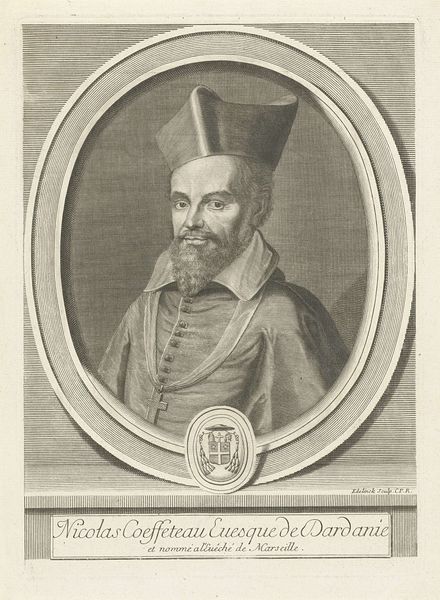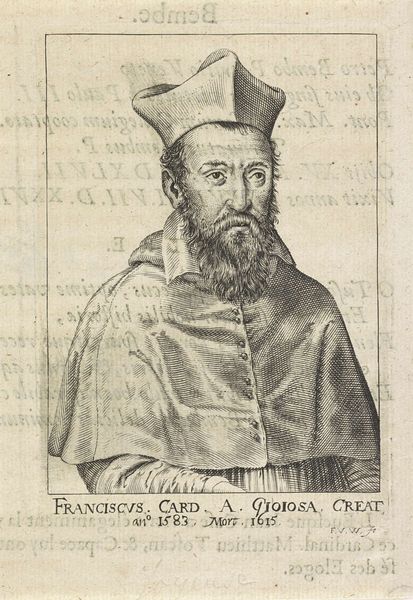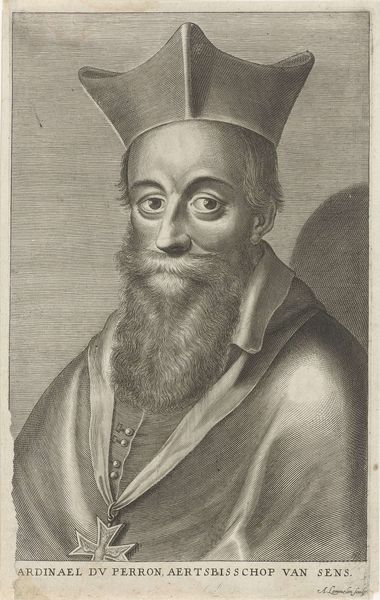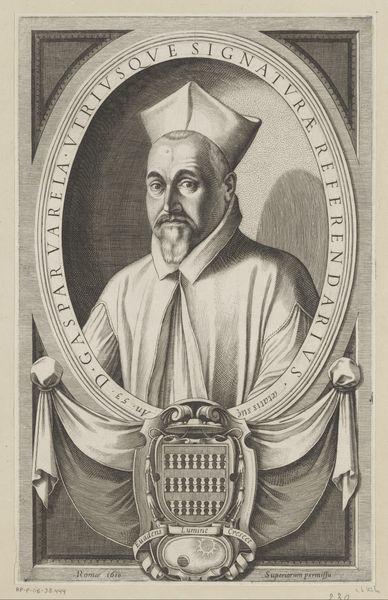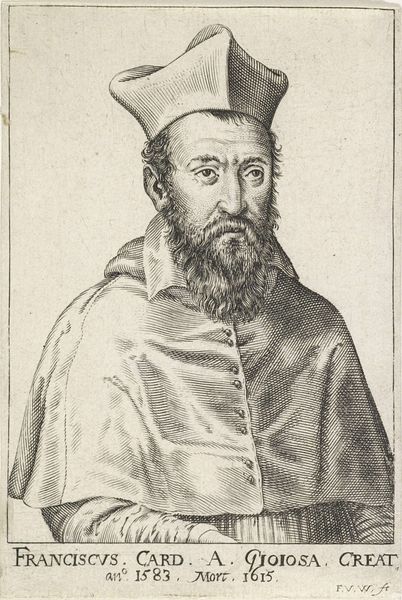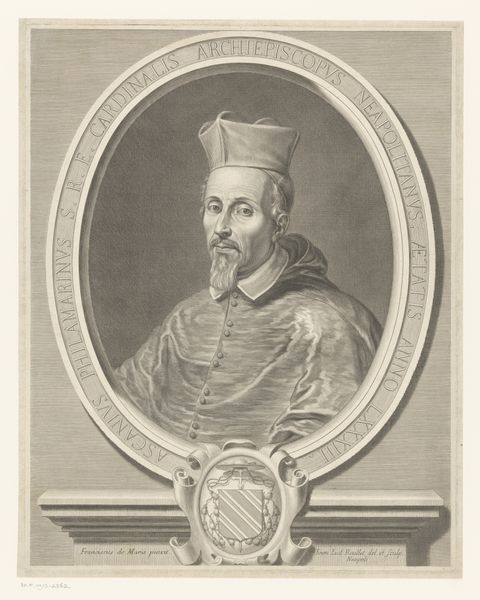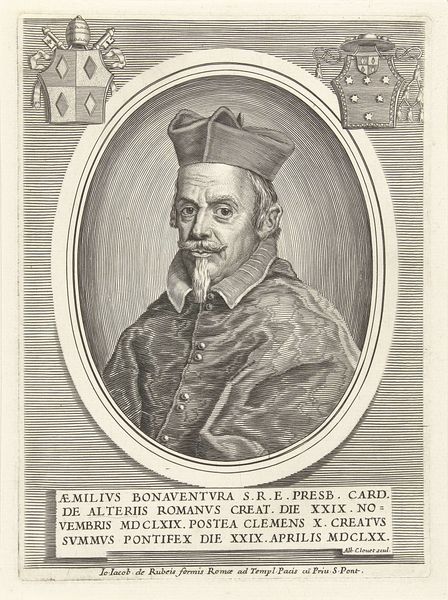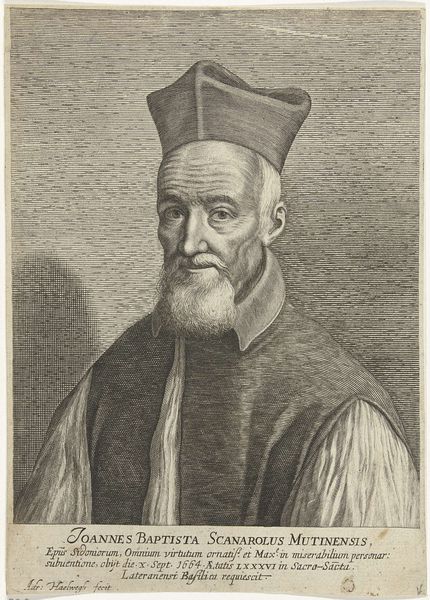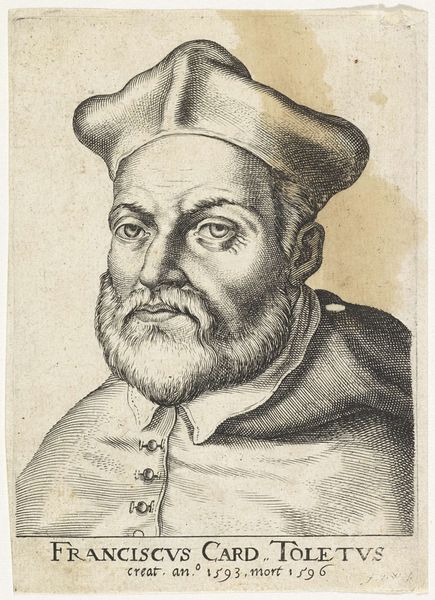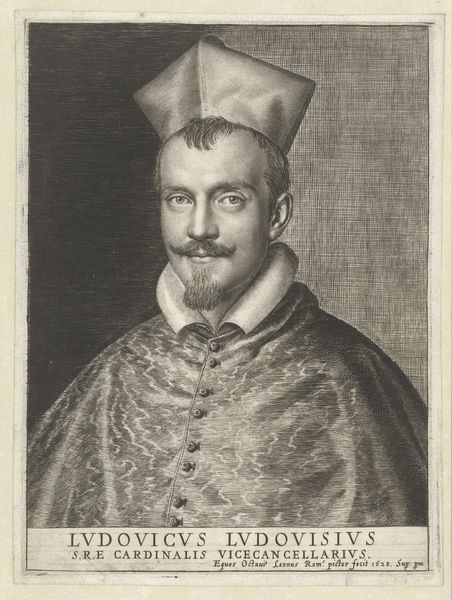
drawing, print, paper, engraving
#
portrait
#
drawing
#
baroque
# print
#
paper
#
line
#
portrait drawing
#
engraving
Dimensions: 290 × 205 mm (plate); 318 × 205 mm (sheet)
Copyright: Public Domain
Editor: Here we have Claude Mellan’s 1623 engraving, "Nicolas Coeffeteau, Bishop of Marseilles." I’m struck by how crisp and detailed the lines are, especially considering the historical context. What’s most interesting to you about this print? Curator: This piece, seen through a historian's eye, is a fascinating record of power and representation. Think about the Catholic Church's influence in 17th-century France. Portraiture like this functioned as propaganda, solidifying authority through visual means. Mellan’s choice of engraving as a medium also plays into this, prints were easily reproducible, allowing for wide dissemination of Coeffeteau’s image, reinforcing his presence, not just physically in Marseilles, but as a symbol across regions. What do you think, did this widespread circulation affect how people perceived him? Editor: That’s a compelling point. It’s easy to forget the political weight behind a portrait like this. I suppose wide distribution would cement his image as a leader, whether accurate or not. Curator: Exactly! Mellan wasn't just capturing a likeness, he was manufacturing a public persona sanctioned by both the Church and the sitter. This speaks to a larger system where art becomes a tool for social control and maintaining hierarchical structures. Note his garments, carefully rendered – conveying wealth, status, and belonging to a powerful institution. Do you find the starkness of the line engraving to be suitable for conveying this message of authority? Editor: Initially, I thought the lines were just a stylistic choice, but now I see that their precision adds to the Bishop's aura of control and almost… infallibility. It's a very effective way to communicate power in a visual format. Curator: Indeed. Considering Mellan’s life during the religious tensions, aligning himself with prominent figures like Coeffeteau certainly influenced his patronage. This piece highlights the interwoven relationship between art, power, and social messaging, making us consider whose voices and perspectives were amplified – and whose were silenced. Editor: I’ll definitely be viewing portraits with a different lens moving forward, especially considering who commissioned them, and why. Curator: And understanding how the choice of the artistic medium itself played a role in shaping perception.
Comments
No comments
Be the first to comment and join the conversation on the ultimate creative platform.

